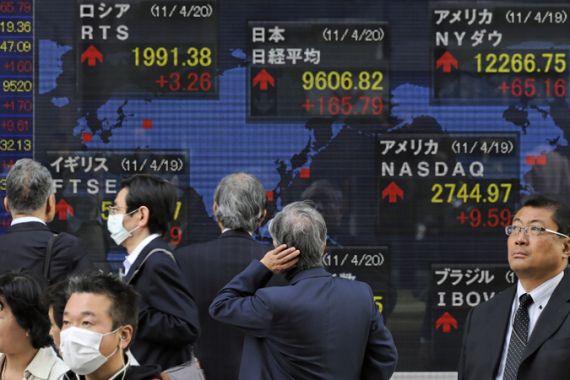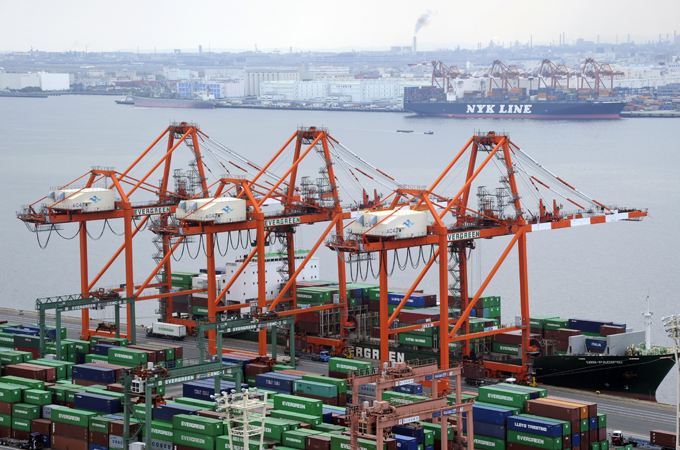Japan falls back into recession
Japan’s economy contracts sharply after devastating earthquake and tsunami.

 |
| Japan’s exports have also declined amid economic contraction [File: EPA] |
Japan’s economy has slipped into recession after a worse than expected performance for the first quarter of the year.
The economy contracted sharply in the first quarter, as factory production and consumer spending declined in the aftermath of the March 11, 2011, earthquake and tsunami.
Keep reading
list of 4 items‘Mama we’re dying’: Only able to hear her kids in Gaza in their final days
Europe pledges to boost aid to Sudan on unwelcome war anniversary
Birth, death, escape: Three women’s struggle through Sudan’s war
Real gross domestic product – a measure of the value of all goods and services produced domestically – shrank at an annualised rate of 3.7 per cent in the January-March period, the country’s cabinet office said on Thursday.
The result marks the second straight quarter that the world’s third largest economy has lost steam and undershoots an annualised 2.3 per cent fall forecast in a Kyodo News agency survey.
While there is no universally accepted definition of a recession, many economists define it as two consecutive quarters of GDP contraction. Others consider the depth of economic decline as well as other measures like unemployment.
Japan’s magnitude-9.0 earthquake and tsunami left more than 24,000 people dead or missing, and wiped out entire towns in the hardest-hit areas.
Damage is estimated at $300bn, making it the most expensive natural disaster in history.
It damaged factories in the region, causing severe shortages of parts and components for manufacturers across Japan, especially automakers. A crippled nuclear power plant caused widespread power shortages that added to the difficulties faced by businesses and households.
Seijiro Takeshita, director of Mizuho International, told Al Jazeera that recovery may take a long time because clean-up efforts were taking so long.
Consumer spending falls
Japan’s factory production and consumer spending both fell the most on record in March. Exports in March went south for the first time in 16 months.
Companies are reporting lower earnings and diminished outlooks for the rest of the fiscal year.
Toyota, Japan’s biggest automaker, said last week that its quarterly profit tumbled more than 75 per cent because of parts shortages after the tsunami. As of May, the crisis cost the company production of
550,000 vehicles in Japan and another 350,000 overseas.
Toyota is expected to lose its spot as the world’s top-selling automaker to General Motors this year.
Even before the disaster, Japan’s economy was shaky.
In a historic shift, China overtook the country as the world’s second largest economy last year. Japan struggled to address a slew of problems including years of deflation, a rapidly ageing and shrinking population, and ballooning public debt.
‘Instant evaporation’
Japanese companies increasingly relied on exports to drive growth and offset the persistently lackluster demand at home. After four solid quarters of growth, Japan’s GDP turned negative in the last three months of 2010 due to weaker exports and consumer demand.
The downturn was expected to be temporary.
Instead, Japan has now recorded consecutive quarters of contraction for the first time since the global financial crisis. GDP fell for four straight quarters starting April 2008.
The country’s economy and fiscal policy minister Kaoru Yosano described the current slump as milder than the previous slide, when global demand “evaporated instantly”.
“The Japanese economy’s ability to rebound is sufficiently strong,” Yosano said, according to the Kyodo News agency.